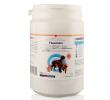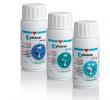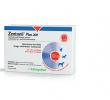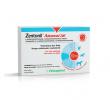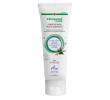
Most dogs just love snow! Sinking their paws into that mysterious white stuff, chasing snowballs, taking winter strolls with their owners...Does your dog also paw at the door at the idea of frolicking in the snow as soon as the first flakes start to fall? If so, don’t forget to take the necessary precautions before heading out with him. With these tips, you can help your dog stay safe and healthy when he ventures out into the snow.
Dress your dog in appropriate gear
Not at all dogs like wearing dog boots, but if it’s cold out or the snow is heavy, you may want to consider them. Is your dog short-haired? If so, get her a dog coat. It gets dark earlier in the winter, so a reflective collar, a safety vest (for you and your dog) and/or a flashing light are must-haves.
Protect paw pads
Protect your dog’s paw pads with a special product that forms a protective layer and helps to prevent paw pad chapping and cracking. Bring it on your walk to apply as needed, but keep in mind that it isn’t advised to reapply frequently.
Here are a few products we recommend, which your vet will carry:
- Pawmagic : made in Canada with an all-natural beeswax-based formula
- Pawguard : another all-natural product that comes in a stick, ideal for taking along on walks.
No eating snow
Most dogs love to eat snow, but try to prevent it as often as possible. In large quantities, snow and ice can make your dog nauseous and cause vomiting, diarrhea, and even stomach torsion (twisted stomach), which can be life-threatening.
First aid in case of hypothermia
Don’t let your dog develop hypothermia. The symptoms of hypothermia are:
- shivering
- curling into a ball
- trouble breathing
- a faint heartbeat
Does your dog have symptoms of hypothermia? If so, bring him inside immediately and wrap him in a blanket (later add a hot water bottle). Keep him hydrated with room temperature water.
Contact your vet if the symptoms persist.
When you get home
Don’t let your dog lick herself dry; wipe her down and towel her off yourself. Toxic de-icing salt (rock salt) from the snow on the sidewalks and in the gutters could cling to her fur. Dry her paws and ears especially carefully, but don’t rub too hard with the towel to avoid irritating her skin.
Tips & Tricks
- Here are some tips to ensure your guests know how to interact with your dog during the Holiday season.
- Here are some tips to ensure a more pleasant stay for your friends and family with cat allergies.
- Do you know what pet insurance can cover? Here’s how it works.
- Contrary to dogs, cats have a profound hatred of costumes. Here’s why.
Products
- Zentonil®, to help support the cognitive function of aging pets, will help when your pet's liver is compromised…





